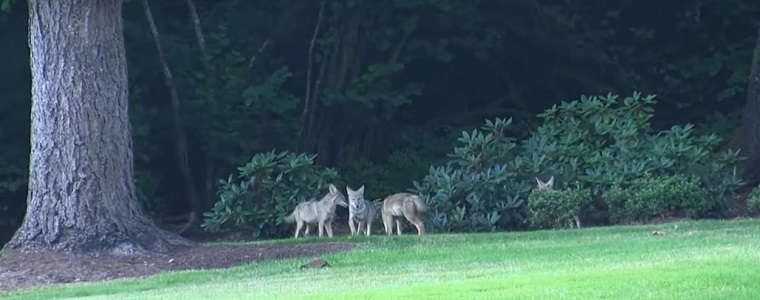-
info@aaanimalcontrol.com
Call us for help in your town
Humane Wildlife Education
How Dangerous Are Coyotes To Humans?
Need coyote removal in your hometown? We service over 500 USA locations! Click here to hire us in your town and check prices - updated for year 2020.
To answer this question, you must look at things from two different points of view. To start with, the animal has sharp teeth and claws that will attack if the animal feels the need to. This is common for all wild animals. However, just like most other wild animals, the coyote would much rather run away from a predator it know it won’t win against. An adult human, being larger and smarter (in most ways), is no doubt going to overcome the animal. Humans have tools and other items on their side. The coyote just has teeth and claws. These help, of course, but they know that being cautious around humans is smart, especially if they want to stay alive.

This is what makes them NOT dangerous — they are more likely to run away and hide than they are to stay and fight. They are VERY cautious around humans. This is what makes them very difficult to trap in live cage traps. In fact, trapping a coyote with any kind of trap is well known to be quite difficult. There have been very few, if at all, attacks from these creatures on humans.
Coyotes will attack domesticated pets if they are given the chance. This will usually be more so the case for smaller cats and dogs, and definitely the case with rabbits, chickens, and other smaller creatures, alongside the rats and mice that probably encouraged them to take a closer look in the first place. It is when these animal interactions happen that the coyote becomes more dangerous, carrying and transmitting many diseases. Some of them can be passed on to humans, such as rabies, and a lot of them are potentially fatal. They are often quite difficult to diagnose, making them all the more dangerous still.
A number of diseases have been associated with wild/nuisance coyotes, including hepatitis, parvovirus, canine distemper, and rabies, and that’s before we mention the parasites, such as fleas, mange, worms, ticks, and more. These are all bugs that can easily be passed to other animals, livestock and domesticated pets alike, and then these bugs and disease can easily be taken right into your home.
It is actually the diseases that the coyote could potentially be carrying that makes the critter so dangerous. The animal itself is more likely to do a runner when you — a fully-grown adult human — gets anywhere close.
For more information, you may want to read How to get rid of coyotes or click on one of these guides that I wrote:
How To Guide: Who should I hire? - What questions to ask, to look for, who NOT to hire.
How To Guide: do it yourself! - Advice on saving money by doing wildlife removal yourself.
Guide: How much does wildlife removal cost? - Analysis of wildlife control prices.


















